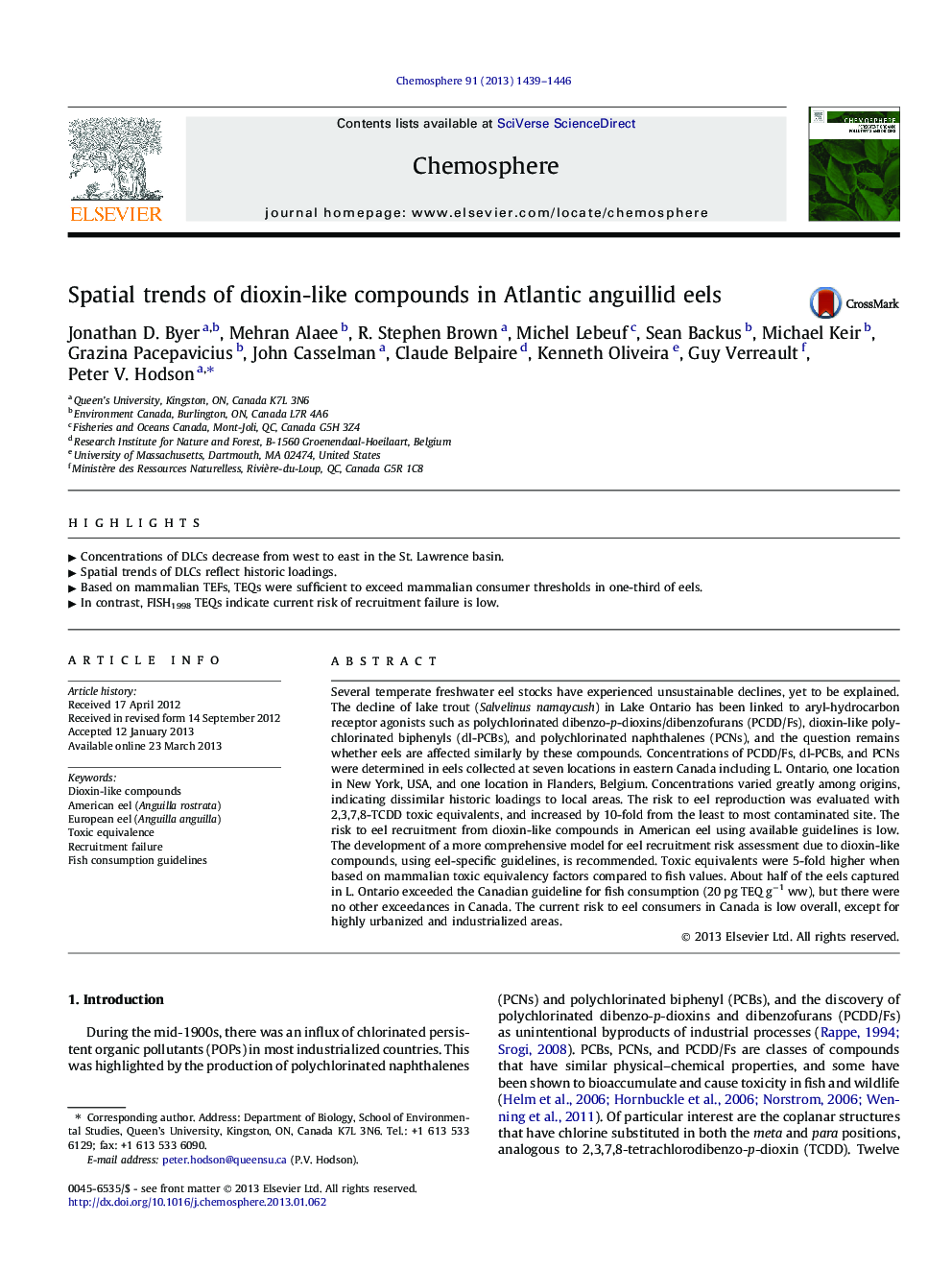| کد مقاله | کد نشریه | سال انتشار | مقاله انگلیسی | نسخه تمام متن |
|---|---|---|---|---|
| 4409463 | 1307485 | 2013 | 8 صفحه PDF | دانلود رایگان |

Several temperate freshwater eel stocks have experienced unsustainable declines, yet to be explained. The decline of lake trout (Salvelinus namaycush) in Lake Ontario has been linked to aryl-hydrocarbon receptor agonists such as polychlorinated dibenzo-p-dioxins/dibenzofurans (PCDD/Fs), dioxin-like polychlorinated biphenyls (dl-PCBs), and polychlorinated naphthalenes (PCNs), and the question remains whether eels are affected similarly by these compounds. Concentrations of PCDD/Fs, dl-PCBs, and PCNs were determined in eels collected at seven locations in eastern Canada including L. Ontario, one location in New York, USA, and one location in Flanders, Belgium. Concentrations varied greatly among origins, indicating dissimilar historic loadings to local areas. The risk to eel reproduction was evaluated with 2,3,7,8-TCDD toxic equivalents, and increased by 10-fold from the least to most contaminated site. The risk to eel recruitment from dioxin-like compounds in American eel using available guidelines is low. The development of a more comprehensive model for eel recruitment risk assessment due to dioxin-like compounds, using eel-specific guidelines, is recommended. Toxic equivalents were 5-fold higher when based on mammalian toxic equivalency factors compared to fish values. About half of the eels captured in L. Ontario exceeded the Canadian guideline for fish consumption (20 pg TEQ g−1 ww), but there were no other exceedances in Canada. The current risk to eel consumers in Canada is low overall, except for highly urbanized and industrialized areas.
► Concentrations of DLCs decrease from west to east in the St. Lawrence basin.
► Spatial trends of DLCs reflect historic loadings.
► Based on mammalian TEFs, TEQs were sufficient to exceed mammalian consumer thresholds in one-third of eels.
► In contrast, FISH1998 TEQs indicate current risk of recruitment failure is low.
Journal: Chemosphere - Volume 91, Issue 10, June 2013, Pages 1439–1446